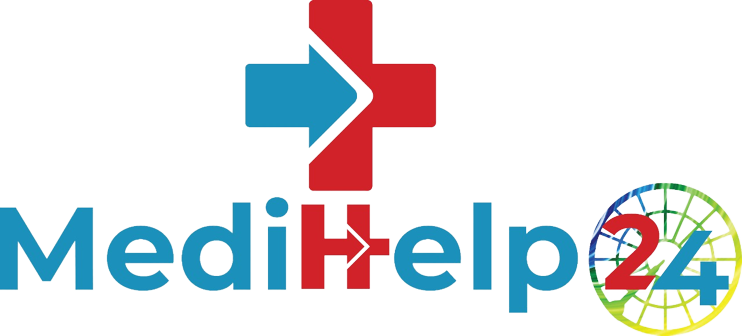
Generic
Ampicillin Sodium
Indications
Ampicillin is indicated in the treatment of infections caused by susceptible strains of the designated organism listed below: Infections of the Genitourinary Tract Including Gonorrhea: E. coli, P. mirabilis, enterococci, Shigella, S. typhosa and other Salmonella, and nonpenicillinase-producing N. gononhoeae. Infections of the Respiratory Tract: Nonpenicillinase-producing H. influenzae and staphylococci, and streptococci including streptococcus pneumoniae. Infections of the Gastrointestinal Tract: Shigella, S. typhosa and other Salmonella, E. coli, P. mirabilis, and enterococci. Meningitis: O. Meningitides. Bacteriology studies to determine the causative organisms and their sensetivity to ampicillin should be performed. Therapy may be instituted prior to the results of susceptibility testing.
Pharmacology
Intra-articular: Supplement in systemic therapy for treatment of susceptible infections- Adult: 500 mg daily. Child: <10 yr Half of adult routine dosage. Intraperitoneal: Supplement in systemic therapy for treatment of susceptible infections- Adult: 500 mg daily. Child: <10 yr Half of adult routine dosage. Intrapleural: Supplement in systemic therapy for treatment of susceptible infections- Adult: 500 mg daily. Child: <10 yr Half of adult routine dosage Intravenous: Meningitis- Adult: 2 gm 6 hrly. Child: 150 mg/kg daily in divided doses. Intrapartum prophylaxis against group B Streptoccocal infection in neonates- Adult: Initially, 2 gm via IV inj followed by 1 gm 4 hrly until delivery. Oral: Biliary tract infections, Bronchitis, Endocarditis, Gastroenteritis, Listeriosis, Otitis media, Perinatal streptococcal infections, Peritonitis- Adult: 0.25-1 gm 6 hrly. Child: <10 yr Half of adult routine dosage. Typhoid and paratyphoid fever- Adult: 1-2 gm 6 hrly for 2 wk in acute infections, and 4-12 wk in carriers. Uncomplicated gonorrhoea- Adult: 2 gm with 1 gm of probenecid as single dose, recommended to be repeated in female patients. Urinary tract infections- Adult: 500 mg 8 hrly. Parenteral: Susceptible infections- Adult: 500 mg 6 hrly, via IM or slow IV inj over 3-5 min or by infusion. Child: <10 yr Half of adult routine dosage. Septicaemia- Adult: 150-200 mg/kg daily. Initiate with IV admin for at least 3 days, then continue with IM inj 3-4 hrly. Continue treatment for at least 48-72 hr after the patient has become asymptomatic or when there is evidence of bacterial eradication. Recommended treatment duration for infections caused by group-A ?-haemolytic streptococci: At least 10-days, to prevent occurrence of acute rheumatic fever or acute glomerulonephritis. Child: Same as adult dose.
Dosage Administration
Intra-articular: Supplement in systemic therapy for treatment of susceptible infections- Adult: 500 mg daily. Child: <10 yr Half of adult routine dosage. Intraperitoneal: Supplement in systemic therapy for treatment of susceptible infections- Adult: 500 mg daily. Child: <10 yr Half of adult routine dosage. Intrapleural: Supplement in systemic therapy for treatment of susceptible infections- Adult: 500 mg daily. Child: <10 yr Half of adult routine dosage Intravenous: Meningitis- Adult: 2 gm 6 hrly. Child: 150 mg/kg daily in divided doses. Intrapartum prophylaxis against group B Streptoccocal infection in neonates- Adult: Initially, 2 gm via IV inj followed by 1 gm 4 hrly until delivery. Oral: Biliary tract infections, Bronchitis, Endocarditis, Gastroenteritis, Listeriosis, Otitis media, Perinatal streptococcal infections, Peritonitis- Adult: 0.25-1 gm 6 hrly. Child: <10 yr Half of adult routine dosage. Typhoid and paratyphoid fever- Adult: 1-2 gm 6 hrly for 2 wk in acute infections, and 4-12 wk in carriers. Uncomplicated gonorrhoea- Adult: 2 gm with 1 gm of probenecid as single dose, recommended to be repeated in female patients. Urinary tract infections- Adult: 500 mg 8 hrly. Parenteral: Susceptible infections- Adult: 500 mg 6 hrly, via IM or slow IV inj over 3-5 min or by infusion. Child: <10 yr Half of adult routine dosage. Septicaemia- Adult: 150-200 mg/kg daily. Initiate with IV admin for at least 3 days, then continue with IM inj 3-4 hrly. Continue treatment for at least 48-72 hr after the patient has become asymptomatic or when there is evidence of bacterial eradication. Recommended treatment duration for infections caused by group-A ?-haemolytic streptococci: At least 10-days, to prevent occurrence of acute rheumatic fever or acute glomerulonephritis. Child: Same as adult dose.
Side Effects
May reduce the efficacy of oral contraceptives. May alter INR while on warfarin and phenindione. May reduce the efficacy of oral typhoid vaccines. May reduce the excretion of methotrexate. Reduced excretion with probenecid and sulfinpyrazone, resulting to increased risk of toxicity. Allopurinol increases ampicillin-induced skin reactions. Reduced absorption with chloroquine. Bacteriostatic antibacterials (e.g. erythromycin, chloramphenicol, tetracycline) may interfere with the bactericidal action of ampicillin.
Pregnancy And Lactation
Hypersensitivity to ampicillin and other penicillins.
Therapeutic
Nausea, vomiting, diarrhoea, erythematous maculo-papular rashes, sore mouth, black/hairy tongue, rash, erythema multiforme, Stevens-Johnson syndrome, toxic epidermal necrolysis, angioedema, fever, joint pains, serum sickness-like symptoms, haemolytic anaemia, thrombocytopenia, leucopenia, neutropenia, coagulation disorders, prolonged bleeding time and prothrombin time, CNS toxicity (e.g. convulsions); paraesthesia, nephropathy, interstitial nephritis, hepatitis, cholestatic jaundice, moderate and transient increase in transaminases, Anaphylaxis, Clostridium difficile-associated diarrhoea (CDAD).
Storage Conditions
Pregnancy Category B. Either animal-reproduction studies have not demonstrated a fetal risk but there are no controlled studies in pregnant women or animal-reproduction studies have shown an adverse effect (other than a decrease in fertility) that was not confirmed in controlled studies in women in the 1st trimester (and there is no evidence of a risk in later trimesters).

